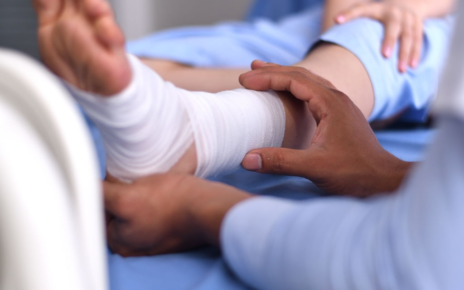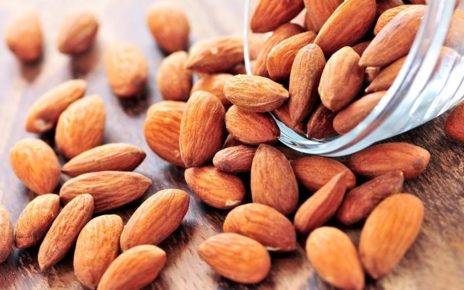Yoni Steam – In personal care, discussions surrounding vaginal well-being remain popular, ranging from scented candles to purportedly therapeutic eggs. The quest for novel methods to enhance and revitalize one’s intimate area continues unabated.
A recent addition to this discourse is the concept of yoni steam. However, it is worth noting that this practice has historical roots, having existed for centuries. Proponents of vaginal steaming claim it can potentially boost energy levels, alleviate stress, and promote hormone balance. Thus, the question arises: is yoni steam a beneficial practice worthy of consideration? What Is Vaginal Steaming or Yoni Steaming?
Vaginal steaming, also known as V-steaming or yoni steaming, involves sitting or squatting over a pot of hot water infused with herbs. Dr Crawford explains that people often wrap a blanket around their lower body to keep the steam from escaping.
While this practice is relatively new in Western cultures, it has roots in an ancient Greek treatment called “fumigation.” In this method, individuals sat over a jar filled with herbs heated in an underground hole. They used a reed to transfer the smoke from the jar into the vagina.
The ancient Greeks believed that the uterus wandered in the body for moisture, and fumigation was done to keep it in place. They believed a wandering and thirsty uterus could lead to infertility and conversion disorder (previously known as hysteria).
In 2012, the World Health Organization (WHO) studied several countries, including Indonesia, Mozambique, South Africa, and Thailand, to learn more about vaginal practices. The study found that some women practised vaginal steaming or smoking to maintain their well-being and preserve their identity. Others did it for a short period after childbirth. Some women also steamed their vaginas for vaginal tightening or as part of their beauty routine.
How Does Yoni Steam Work?
Vaginal steaming is when you sit over a pot of hot water with herbs. The herbs include basil, mugwort, rosemary, or wormwood.
Those who do vaginal steaming think that the herbs can go into the tissues of the vagina and give different advantages.
Some individuals try yoni steam at home, while others use spas. Usually, the treatment goes on for about 20 to 45 minutes.
Here is a suggested way to do a Yoni steam at home. However, learning about the claimed benefits and potential safety concerns is essential before trying it yourself, as explained below.
Get a basin of hot water and add around a cup of your chosen herbs. Let the herbs soak in the water for at least a minute. Take off your pants and undergarments below the waist. Stand directly over the basin. Some people find it comfortable to place the bay in the toilet and sit on the toilet seat.
Wrap a towel around your waist and legs to keep the steam from escaping. Typically, a steam session lasts between 20 and 60 minutes. Depending on the water temperature, the moisture may cool down sooner.
Vaginal Steam Benefits
Specific individuals claim that vaginal steaming provides numerous health advantages and even refer to it as a “facial” for the vagina.
Reported benefits of yoni steam include:
- Reducing menstrual symptoms like cramps, bloating, exhaustion, and heavy bleeding.
- Boosting fertility.
- Aiding in post-childbirth healing.
- Reducing stress.
- Treating haemorrhoids.
- Increasing energy and decreasing fatigue.
- Treating headaches.
There is a lack of scientific studies to substantiate these claimed benefits. However, some suggest that it improves blood circulation to the vaginal tissues, which can contribute to healing.
Is Yoni Steam Benefits?
The main safety concern is the potential for the steam to cause burns on the delicate vaginal tissues if it is too hot.
Introducing additional moisture and exposing the vagina to certain substances in the steam could also raise the risk of bacterial or yeast infections for women.
If the equipment used for vaginal steaming is not adequately cleaned, there is a possibility of infections and other side effects. Hence, it is crucial to clean all equipment thoroughly before use.
If someone chooses to go to a spa for vaginal steaming, they should inquire about the spa’s equipment cleaning practices and the precautions they take to minimize the risk of infections.
Yoni steam is not recommended for pregnant women as the steam could potentially impact the developing fetus. Similarly, doctors generally advise pregnant women to avoid hot tubs, saunas, and heating pads around the pelvic area for the same reason.
If someone attempts vaginal steaming, it is crucial to maintain a safe distance from the steam and ensure that the water temperature is not excessively hot.
If the steam feels uncomfortable or excessively hot, it is important to move away from it.
Women aiming to restore the pH balance in their vagina due to frequent infections should consult their doctor before trying vaginal steaming.
Prescription treatments are available to restore pH balance, which are generally more effective than relying solely on yoni steam.
Conclusion:
Your vagina is designed to clean itself naturally and does not require assistance from herbal steam sessions. At the same time, yoni steam may provide relaxation and temporary relief from cramping, similar to a heating pad. There is no scientific evidence to support claims of vaginal cleansing, improved fertility, or hormonal balance through steaming.
Vaginal steaming may increase the risk of vaginal infections by disrupting the natural bacteria balance in the vagina. Although some herbs may benefit reproductive health, there is no evidence steaming them directly into the vagina offers those benefits.
It’s important to remember that herbs can be powerful and may cause allergic reactions when used topically. Experiencing an allergic reaction in the vagina is something best avoided.
There are safer alternatives for menstrual pain relief that involve heat and herbs. You can try using a hot water bottle on your pelvic area and drinking warm herbal tea.
If you are considering yoni steam, it is advisable to consult with your doctor or a qualified alternative health practitioner to discuss the potential advantages and disadvantages.
Discover more from Thenewsdoor
Subscribe to get the latest posts sent to your email.





